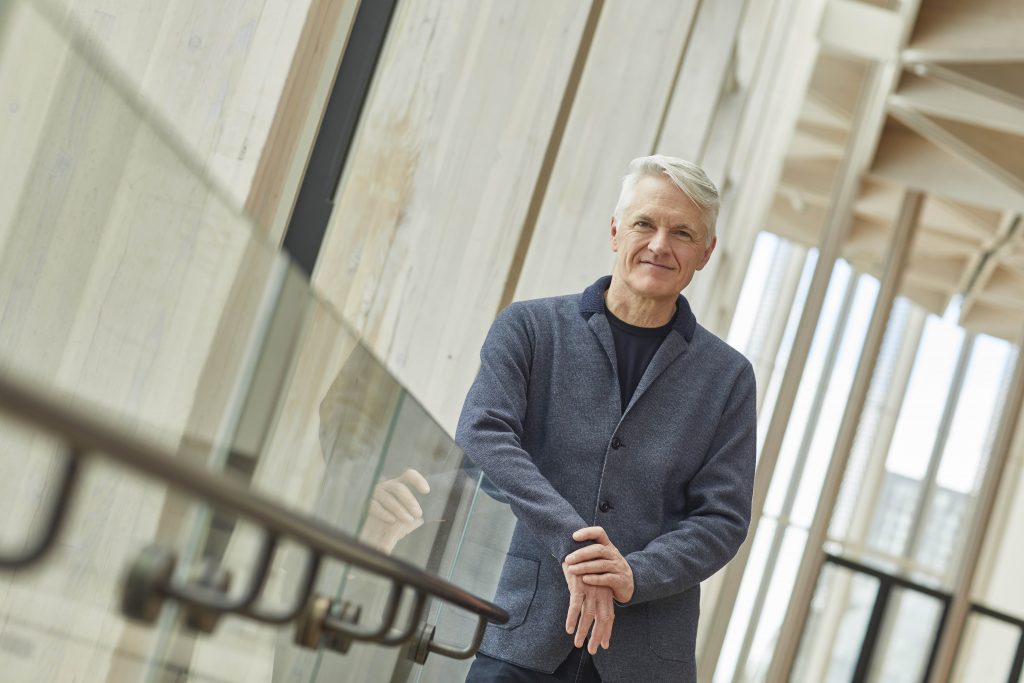
Christopher Deacon
The performing arts audience is shifting. No one knows this better than NAC CEO Christopher Deacon.
By Iris Winston
After a 32-year career in arts administration at the National Arts Centre, Christopher Deacon has been made the institution’s new President and CEO, the first person to have risen to the top from within, during the half-century that the NAC has been in existence.
The search was rooted in “a rigorous and disciplined search to find the best arts executive to lead Canada’s National Arts Centre,” says the NAC board chair Adrian Burns, who headed the recruiting committee. “We found the right person right here at the NAC to provide the vision and leadership necessary to guide the organization into its next half-century. Few people know the NAC as well as Christopher Deacon.”
His predecessor Peter Herrndorf, who led the NAC for 19 years, is equally enthusiastic about the selection. “Christopher Deacon is a champion of the performing arts in Canada,” he says. “He’s got a proven record as a risk-taker and as an adventurous arts administrator leading highly ambitious projects.”
For example, as the managing director of the NAC orchestra, he led two major orchestral tours, to China in 2013 and the U.K. in 2014. He also headed the ambitious multimedia presentation Life Reflected, in which four Canadian composers were commissioned to tell the stories of four Canadian women in music, movement and words. Performed during the Canada 150 tour Life Reflected will also be part of the NAC orchestra’s 50th anniversary tour of Europe. He was also the man Peter Herrndorf tapped to oversee the massive architectural $225.4 million rejuvenation and production renewal of the NAC.“
People give me a little more credit for that than is reasonable,” says Deacon, who chaired the steering committee through the project. “First, it was Peter Herrndorf’s vision. Second, it was the work of the brilliant architects, Diamond Schmitt, the project manager and the whole team. The role I played was to ensure that the values of the institution were reflected in the renovation and that all those involved be reminded constantly that this was a centre for the performing arts. We also wanted to make sure that senior management and artists didn’t feel it was something being done to them and to ensure that they were involved [throughout the process]. The project was really about renewing the institution through renewing the building.”
For the 60-year-old Deacon, that work and heading the organization are more than the upward trajectory of a successful career. Rather, “being part of the NAC team is a calling.”
“It’s a great challenge, but it’s also a great honour to be at the head of a national institution for the performing arts where the most exciting artists from across the country are performing,” says Deacon, whose life has been filled with music since he was very young.
“It’s exciting because it’s our 50th anniversary and that is following the culmination of the renewal of the public spaces and production facilities of the building,” he continues, adding that the recent launch of the National Creation Fund adds to the excitement.
(The NAC’s National Creation Fund will provide up to three-million dol-lars a year from donations to fund 15-20 new works in various disciplines).
Deacon defines his philosophy of leadership as recruiting the best possible people—he was instrumental in hiring Pinchas Zukerman and then his successor Alexander Shelley to lead the NAC orchestra, for example—establishing clear goals, making the appropriate resources available and then standing back.
“Give them room to breathe,” he says. “When you hire brilliant people, they are very motivated, and they can chart their own course.”
As he sees it, his charge of the NAC is “almost a sacred responsibility to provide an enriching experience of the performing arts that gives the opportunity for profound reflection and regeneration. From the day the doors of the NAC opened, creating, producing and presenting the best and most exciting performing arts from across the country has been at its core. It also brings to Canadian audiences in the capital, some of the most interesting arts happening around the world and also helps Canadian artists tour.”
“In some cases,” he adds, “audiences can be profoundly moved and even changed by the experience, whether it’s ballet, music, theatre or a singer-songwriter. People all find their own way in the performing arts to appeal to a multitude of tastes.”
“Having said that,” he continues, “I see my piece in the chronology of leadership as being vitally important that the NAC engage a wider, more diverse and younger range of audience members. It’s not a question of commerce. Rather it’s a question of public service and engaging the whole country in the performing arts. I think that the national centre of the performing arts needs to be a place that is central to the life of the country.”
This, he emphasizes, means bringing in a broader range of audiences and ensuring that everyone feels welcome and is not intimidated by the grandeur of the building. He also notes, that as “the next generation is replenishing and engaging,” the institution will change.
“It’s going to mean that the NAC looks and feels different,” he says. “But an artistic organization is only going to thrive if it is renewing and changing constantly. I believe that we can make the transition more rel-evant and impactful for younger and more diverse audience members. We will still provide the opportunity for profound engagement in the performing arts for the audience members who have been coming to the NAC almost from the time the building opened.”
He sums up his vision for the future of the NAC, by noting that “the fundamental work of creating great performing arts” is a job that is never completed.
“People are writing new songs, creating new ballets, writing new plays, all the time and you couldn’t possibly program them all,” says Deacon, who sees a primary part of his mission as inviting a wider com-munity to enjoy all that the NAC has to offer. “What I can do is help the whole institution look towards an engagement with the younger and more diverse population. That is the key thing for me.”
“In a sense, this is the job that my whole career has been preparing for,” he says. “It’s my turn at bat and I want to hit a home run. When I eventually retire, I’d like to be able to say that I used my turn well.
